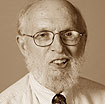Commentary on 1 John 5:9-13
In looking at the first letter of John for these weeks of Eastertide, we have suggested that this epistle is really a sermon.
It lacks the salutation and farewell of a typical first century letter, and the style and movement of the work suggest an extended homily rather than the give and take of correspondence.
We have further suggested that the occasion for the homily is some kind of growing division within 1 John’s community. The division is, in part, over the right interpretation of the text that that community holds sacred — the book we call The Gospel of John.
Thus, the occasion for the sermon is a community dispute, and the text for the sermon is John’s Gospel.
In today’s verses, written as the sermon draws to a close, we watch the epistle writer draw on themes that are familiar to us from the Gospel — witness, Sonship, faith, and eternal life.
Witness
The theme of witness is central to our Fourth Gospel:
- At the beginning of the Gospel, John the Baptist bears witness to Jesus (John 1:7, 8, 15, 32).
- Jesus bears witness to himself and the Father bears witness to him (John 5:31, 32; 8:18).
- The beloved disciple bears witness to the events of crucifixion and resurrection (John 19:35; 21:24).
- After Jesus’ death and return to the Father, the Paraclete will bear witness to the truth of the gospel. (John 15:26)
- Finally — implicitly at least — the Gospel itself becomes a witness whose testimony is true and fully to be believed (John 20:31).
In the passage just preceding today’s text, the author reminds the congregation that there are three witnesses to the reality of Christ’s incarnation — the water, the blood and the Spirit. This Spirit is surely the Paraclete whom Jesus promised to bring testimony about him.
Today’s passage claims the testimony of yet another witness, God’s own self — understood here as God the Father (1 John 5:9).
This epistle, like the Gospel it interprets, presents a kind of trial for the world. Those who read it are the jury, and they are asked to decide whose testimony is true — the world’s or that brought by both the Spirit and the Father.
In the case of John’s Gospel, the world testifies that Jesus is a false prophet misleading the people who rightly should follow only Moses.
And in the case of this epistle, the world’s testifies that “Jesus” is only the illusory appearance of a human, conveniently disguising the eternal Son. In classic terms, the “world” testifies to a docetic Christology.
Now, the division between believers and the world is not between the church community and those outside but between groups within the church.
In light of the testimony of the Father and the Spirit, the jury (the congregation who hears this homily) has to judge whose testimony is true. But ironically, it is not the Father or the Spirit who is judged; it is the jury that will finally be convicted either of truth or error.
Sonship
In the Gospel of John and in this letter, the primary title for understanding Jesus is the title “Son” (cf. John 10:36, 11:4, 17:1).
There are, of course, the dangers of an unnecessary exclusivism when we preach only about God as Father and Jesus as his “Son.” The easy translations do not work as well as they should. “Parent” is oddly impersonal. You do not introduce me to your “parent” but to your mother or father. And “child” is usually juvenile.
The epistle wants to insist that the relationship between God and Jesus is entirely personal and entirely grown up. And the epistle wants to insist that the relationship between Jesus and those who believe is entirely personal and grown up, too. Whatever language we can use to convey the strong bonds between God and Jesus, and between God, Jesus, the Spirit and the believers, will bear true witness to what the epistle intends.
Faith
The way in which believers lay claim to their part in this personal relationship is through faith (cf. John 3:16, 20:31).
Often in the New Testament, “faith” is primarily a matter of trust or commitment. But in John’s Gospel and in this epistle, faith is primarily a matter of “belief.” However, it is not so much “belief that” as it is “belief in;” belief in Jesus as God’s own Son.
“Those who believe in the Son of God have the testimony in their hearts. … I write these things to you, who believe in the name of the Son of God, so that you may know that you have eternal life” (1 John 5:10, 13). Notice how 5:13 echoes John 20:31, “These things are written so that you may come to believe that Jesus is the Messiah, the Son of God, and that through believing you may have life in his name.”
In our time, we appropriately rejoice in the gifts of an inclusive church and an open table.
And yet this epistle, like John’s Gospel, reminds us that right belief does matter for full life. The wobbly Christology of John’s opponents — a phantasmal Jesus barely concealing an ethereal godhead — wobbles for our time, too. Full faith demands full flesh and full incarnation. Otherwise what is redeemed is only some phantasmal us.
Eternal Life
In the Fourth Gospel and in this epistle, eternal life does not refer exclusively to life beyond the grave (cf. John 3:16, 6:54). Eternal life is full life, now and in the world to come.
When the epistle says that those who “believe in the name of the Son of God may know that they have eternal life” (1 John 5:13), it does not mean that the faithful believe now and have eternal life later. Those who believe know that they have eternal life because the belief, the faith, is itself eternal life, real life.

May 24, 2009